Sarah Schmeer
Today we move back from the UK to the USA. Colorado, to be precise! The featured rider today is Sarah Schmeer from Colorado. Sarah is a true adventurer. She has climbed Colorado’s 58 peaks above 14,000 feet, traveled through 24 different countries on 5 continents, one of which was solo via motorcycle, and like a modern day Phileas Fogg will soon embark on a journey that will see her retracing the steps of her childhood hero Richard Halliburton through Europe, Asia and the South Pacific via every available means of transportation, which she refers to as the Uneven Tenor Project.
That last one so revived in me long forgotten memories of one of my favorite girlhood books, Jules Verne’s “Around the World in 80 Days”. In a world that seems so devoid of the whimsy and mystery of that bygone era, I’m so delighted, grateful even, that she is out there re-creating some of that magic for the rest of us, and showing us that it *is* possible to grow up to be your hero. [Rashmi Tambe, Editor, Global Women Who Ride]
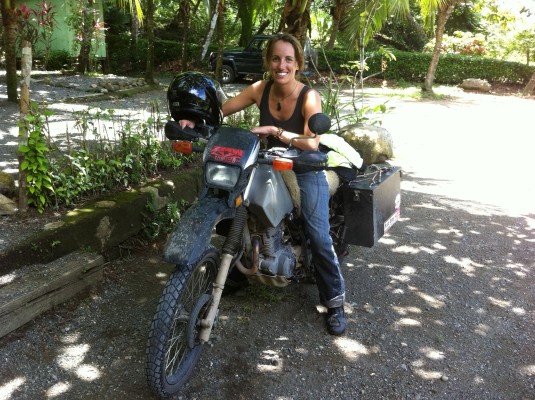
Please introduce yourself. I’m from Colorado, born and raised. My idea of heaven is anywhere above treeline. I’m always switching back and forth between travel, work and school. Currently I’m attending graduate school for my Master’s in Watershed Science, but when I graduate I’ll be hitting the road again for an epic around-the-world adventure in the footsteps of my hero, the famous traveler and writer Richard Halliburton.
Do you have a motorcycling achievement that you’re particularly proud of? Why yes, I do. Before knowing how to ride a motorcycle, I decided to ride from the US to Panama. So, in 2011 I bought a Yamaha XT225, learned to ride it around town, then left home and did, indeed, make it to Panama.
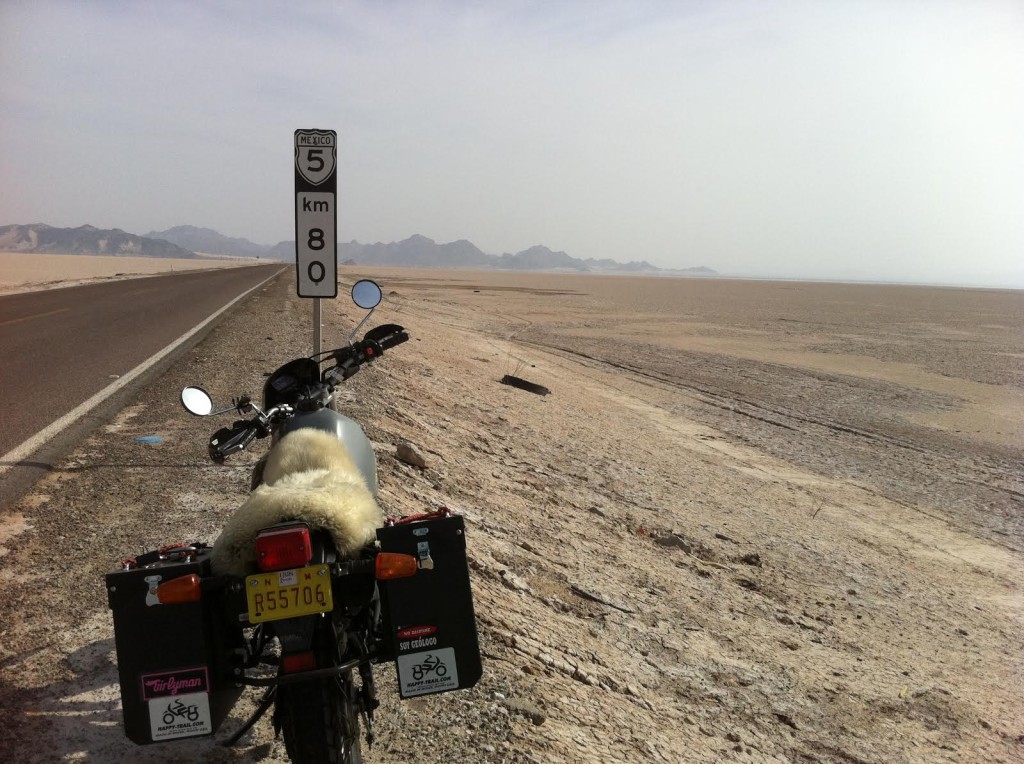
Fully loaded XT225 stopped somewhere in Mexico
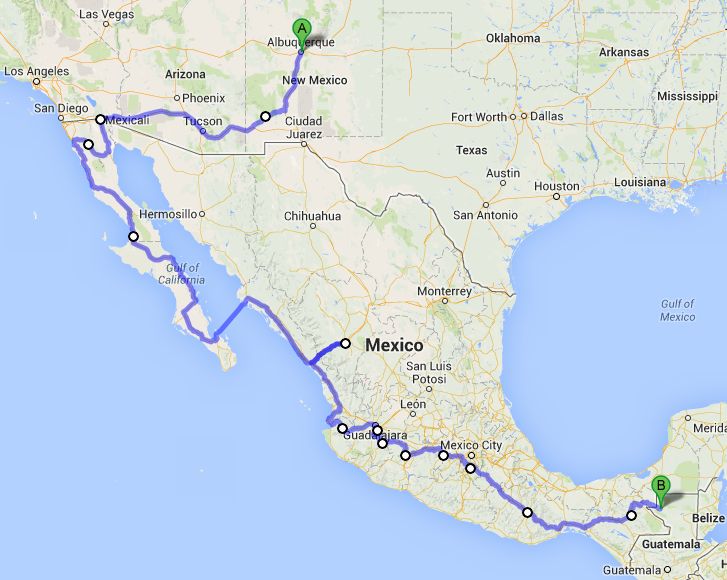
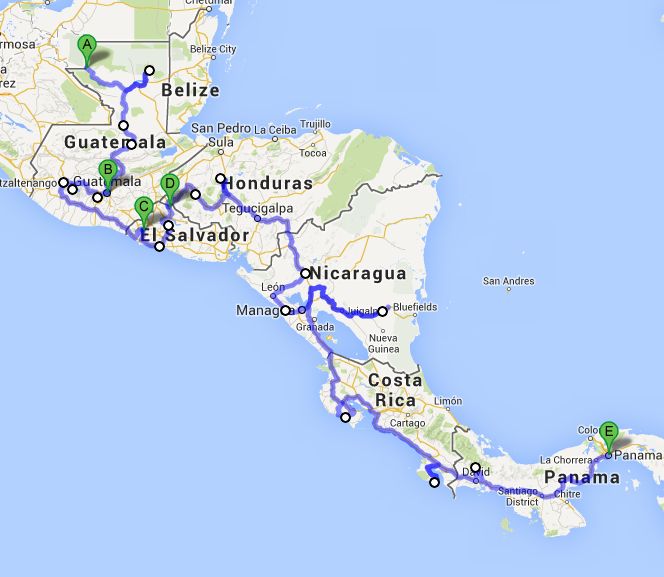
Details please! My trip took 7 months and I covered 10,000 miles. The learning curve was *immense*. I went from riding around the neighborhood in Los Alamos, NM to completing 13 river crossings in a single day in Costa Rica. Since then, I’ve moved back to Colorado, upgraded to a slightly larger bike, and have been learning to ride off-road properly.
The trip itself was insane. In some ways it was harder than I expected – the constant worry about my safety and the safety of my bike, finding bike-friendly places to stay, etc., but in many ways it was easier. I was able to explore difficult terrain thanks to the support of other riders I met on the way; I adapted easily to the lifestyle; my riding level improved immeasurably; and I never got a single flat tire in all that time!
I think the best part of that trip was the versatility the bike allowed me. Though at times it felt limiting, that was mostly me worrying too much. In reality, the bike allowed me to easily explore places other travelers couldn’t, like the back roads of the Corcovado Peninsula in Costa Rica, and the little towns and side roads off of the main highways. That bike introduced me to some incredible people, too, either by jump starting conversations with locals, or by getting me in the door with other riders.
But the cherry on top of the whole experience was this: In every destination town I was just another tourist, making lifelong friends and having ridiculous amounts of fun. But every time I left town I was alone again, peaceful, quiet, just me, my bike and the endless road. That was utter bliss.
What bike did you pick? My Yamaha XT225 that earned the name Burrito somewhere in Baja on the epic trip was my very first bike. I bought the XT because the dual sport market for short people is extremely limited, and this one had the best resume out of the few options. I could get the toes of both feet down, which was very important to me as a novice rider, the bike was light enough for me to pick up when I dropped it, and its durability and resilience are the stuff of legends. That bike never let me down!
Do you have a favorite story from the trip? I joined up with three other riders to venture into the Corcovado Peninsula in Costa Rica. To get to our destination we had to ride a really rough dirt road complete with steep hairpin corners, rolling rocks, mud, sand, and stream crossings. I’d never crossed a single river before, and by the end of that day I’d made it through thirteen. I was so proud of myself!
After a few days camping on the beach, we rode the same road back to town. The first ten crossings went fine, and then on number eleven I misjudged my line and got in way too deep. I lost control of my bike but didn’t let go of the throttle, so I ended up riding a stupid little 360 before dropping my bike in the river and utterly drowning the poor thing. My friends helped me get out of the river, and we tipped the bike to allow gallons of river water to pour out. The bike started and off we went. But halfway up the hill, with my friends already out of sight, my bike died.
I ended up performing five oil changes on a lonely stretch of jungle road before the bike would turn over again. And where did I get those five liters of oil? From a passing man on horseback, of course.
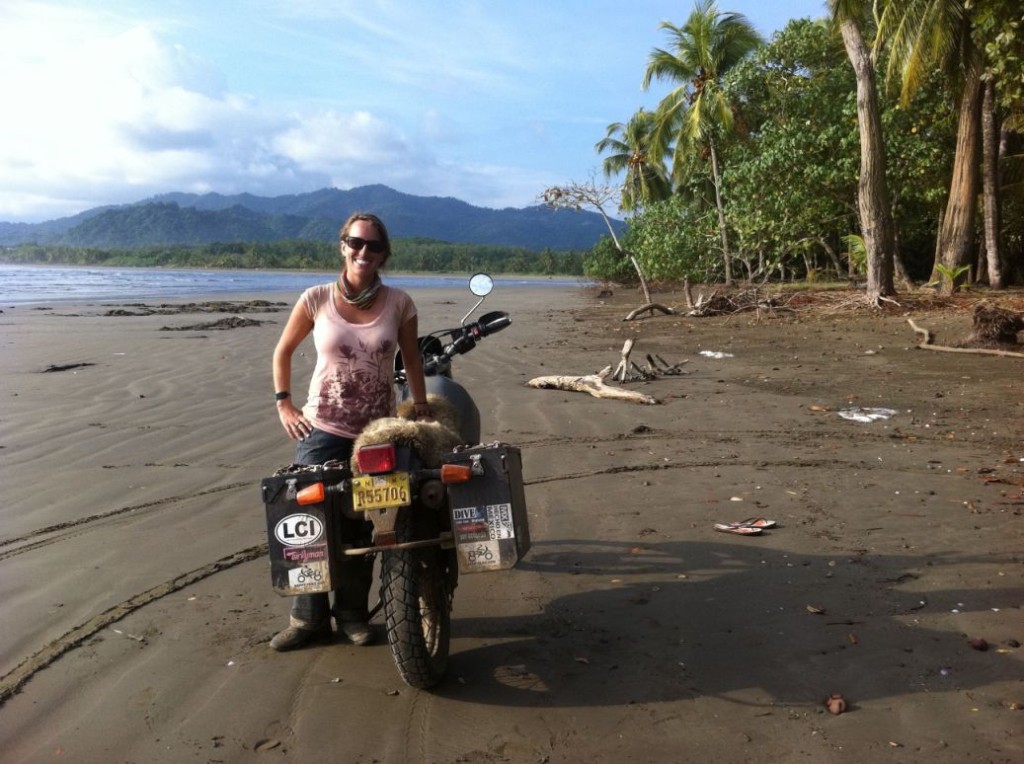
Sarah Schmeer on Playa Coyote in Costa Rica
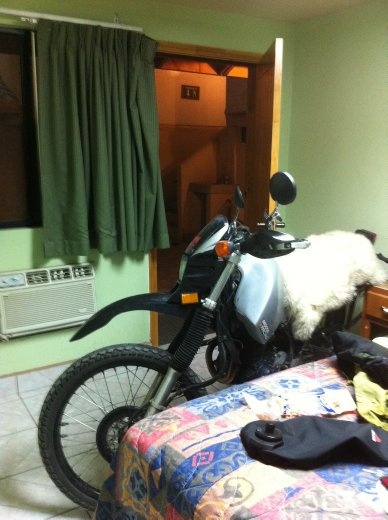
Riding your bike into your hotel room
Did you ever crash? Yes. A friend and I were riding a back road in the Sierra Madre in Mexico, one of those roads you should try to finish by sunset because you don’t want to be on it after dark. At least, that’s what all the locals said. My friend was a little ways ahead of me. I hit sand, lost control of my front end, and flew over the bars, landing on my left shoulder and separating it badly. I couldn’t get my bike upright one-armed, and I was light-headed, so I lay down and waited for my friend to come find me.
Once he did, we got the bike back up, but I had to ride it many more miles on a dirt road to the nearest town, where we spent a very sketchy night. The next morning we finished the ride, and a couple days later I rode the final 300 mi to a hospital on my own. My shoulder hurts just thinking about it!
It made me extra-cautious for a while, but it also made me more determined than ever to master sand. Sand still scares me, and I hate riding in it, but I’m getting better.
What mods did you do to the XT225 to make it ride-ready for Central America? I put on Pirelli Scorpion tires with decent tread for rough roads, but not full-out knobby tread. They lasted me the whole 10,000 mile trip, whereas my friends with knobbies had to replace theirs on the way. I felt like the tires were aggressive enough, but I wasn’t doing much serious off-road riding.
I increased the front sprocket to a 16-tooth to improve highway revs. New chain, rear sprocket, front bearings, cables and brake pads to make sure I was starting off on the right foot. Upgraded the 2 gallon tank to a Clarke 4.1 gallon tank–essential upgrade! I could go forever on a single tank of gas.
Installed a kickstarter (good move), a 12-V cigarette lighter style charger (never used it), Moose Racing hand guards and bark busters (good move), and used the Happy Trails aluminum panniers (loved them).
And, finally, a big, soft sheepskin for my butt. The sheepskin got super gross and smelly by the end of the trip, but it made a huge difference in comfort! [More details.]
What kind of gear did you bring with you? Here are some links to my pre-trip and post-trip gear rundowns on my old blog:
http://journals.worldnomads.
http://journals.
I carried far less motorcycle-specific gear than most other riders. Truth is, if a part fails or you break down, you’re not going to want to do much work on the side of the road. You’ll flag down a truck, load up your bike, and get dropped off in town where you have access to tools, hardware stores, etc. With that in mind, I only took the following:
- Socket wrench, extension and sockets (8, 10, 12, 13, 14, 17, 19, 21 and 22mm)
- Spark plug socket (18 mm deep) and spare spark plug
- Adjustable wrench
- Multi-tool with allen heads, phillips and flathead
- 8, 9, 10mm triangle socket tool (my favorite tool ever!)
- Small vise grips
- Tire levers – three!
- Zip ties
- Spare fuses
- Front and rear tube, patch kit, tire gauge and bicycle hand pump
- Stock front sprocket
- 2 sets of keys
- Duct tape and electricians tape
- Various bungees
- Bike manual
- WD-40 (for lubing chain)
- I stored the tools in a homemade locking tool tube mounted on my pannier frame
Everything worked out fine. I had the tools I needed for basic maintenance and repairs, and only ever had to borrow tools a couple times. When things broke (like the headlight bulb), I bought a new one at the next hardware store.
Personal gear is, well, more personal. I’m a very minimalist traveler. Many, many people told me they were astonished how little I brought with me–everything (including motorcycle parts and gear) fit into two side panniers. That’s it. And it was an important point for me–I could barely pick up my bike without panniers on it, how could I pick it up if I were carrying 100 lbs of gear? So I packed light, and I chose gear that could pull double-duty, like wearing my normal hiking raingear over my riding gear when it rained.
I’m guessing that you are pretty handy mechanically? Though I have no background or knowledge, I love getting hands-on with machinery, so I’ve done all the work that’s needed to be done! When I got my stock XT225, I kitted it out for overlanding all on my own using online resources and many trips to the hardware store: I installed a new tank, hand guards, sprockets, chain, and, my biggest accomplishment, a kickstarter!
More recently I’ve learned how to find, remove and re-jet my carburetor. Friends with garages, tools and muscles have helped me with the bigger projects. Oil changes and chain lubing, while intimidating at first, are now so easy I don’t have to think about it!
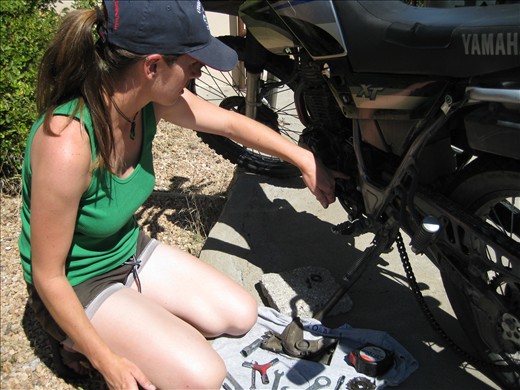
Women Who Wrench! Sarah Schmeer works on her motorcycle
So if there was one piece of gear that was absolutely indispensable for a trip like this, what was it? Just one? How about a top three?
1. My Buff. Ever been hit in the jugular by a giant beetle? It doesn’t feel good. A Buff protects your throat from projectiles and from the cold, and doubles as a headband after you take off your helmet.
2. Triangle socket tool thingy. It’s such a simple little gizmo, but it was so useful. I kept it in my jacket pocket with my tire gauge. The three socket sizes (8, 9 and 10 mm) were the most common on my bike, and the shape of the tool made it easy to screw/unscrew bolts.
3. Sheepskin. Not only did it keep my butt comfy, but it doubled as a pillow, impromptu mat for laying in the shade, kneeling pad when working on the bike, and endless conversation starter.
4. (whoops). My Steripen was terrific for purifying water. It’s the ultimate travel water purifier.
How good was your Spanish and how critical would that be for someone who wants to do a trip like this? My Spanish was pretty darn good before going, and considerably better by the end. But honestly, it’s not essential. I met numerous people who didn’t know a lick of Spanish before they went, and they were holding conversations with locals within a couple months. Sure it’s easier and more fun to know the language, and I completely recommend doing so, but if that’s the only thing holding you back, well, you need a better excuse.
Do you get any family opposition when it comes to motorcycling? My parents were so unhappy and so worried. Not only was I riding a motorcycle, I was riding it through “dangerous” countries by myself. You can imagine how well that went over. I reassured them that I was an extremely safe rider, and that I would be very cautious, and that I would find other riders—all of that was true, but it didn’t help. They still hate that I ride, but now we deal with it by not talking about it!
If any of your readers are thinking about doing an epic trip of their own, what advice would you give them to prepare for something like this? Gosh, I don’t think there’s any way to really prepare for it. Every person on every trip in every country is going to have a different experience. You can know that you’ll have hard days, and you can know that you’ll be lonely, and you can know that you’re going to crash eventually, but none of that prepares you for when it actually happens. Really, you just have to take a deep breath and dive on in. But the good news is the hard days, the lonely times, the frustrations…it’s all fleeting. Those are the things that become funny stories a few years down the road. What does matter, and what does last, is the good stuff: the people you meet and the friends you make, the sunsets you watched, the mountains you climbed, the food you ate… that’s what you come home remembering.
My biggest piece of advice, no matter where you go, is to trust people. We don’t do that in the US, and it holds us back immensely. But when you’re out there on your own, you’re going to have to ask for help, accept help, and hope for the best. And guess what? It works out. The vast, vast majority of people out there do not want to harm you or make your life harder–they want to help you. Let them.
Does being a motorcyclist make you feel like an outsider or a cool insider? Mostly an outsider. When I was riding to Panama I was a bit of a freak, especially in the eyes of the locals, and even in the eyes of the other riders I met. An inexperienced female rider going solo to Panama must be crazy, right? It wasn’t until the last couple thousand miles of my trip that I felt people were taking me seriously, probably because it took me that long for me to take myself seriously.
Back in the US, I still feel like an outsider, but as a woman, not as a rider. I get the impression that men like the idea of women who ride, but are rather put off by actual women who ride, especially the ones who do their own maintenance and ride big, intimidating bikes instead of cute scooters. However, the local trail riding club is an example of the opposite: the riders in that club, men and women alike, are very welcoming and open to new riders of any gender and any level of experience. And being able to keep up with them when we talk about engine capacity and tire selection definitely makes me feel like a cool insider!
What is your favorite type of motorcycle riding? I love dual sport riding. You get the speed and ease of riding pavement, and the excitement and challenge of riding dirt, all on the same machine. To be perfectly honest, dirt riding terrifies me, but it’s a good kind of fear, one that lets me know I’m pushing my boundaries and learning new skills. It’s exhilarating!
What do you ride these days? I bought a used 2006 KLX 250s once I moved back to Colorado. It’s a step up from the XT225, both in terms of size/weight and speed/power. The XT225 was the ideal beginners bike for me, but now that I’m a more confident rider, I know I can handle the larger bike and I enjoy the increased speed and power. Still, it’s really low-powered for a dual-sport, but there just aren’t many choices for dual sports that short people can ride!
If you could design your dream motorcycle, what would it look, feel and ride like? Simple: it would be a dual sport with the power and comfort of a DR650, but low enough for me to touch the flipping ground with one foot. Is that too much to ask?
Is there anything in the current motorcycling industry that you would like to see change? I would like to see more options in dual sport motorcycles! All the modifications that are necessary to get a “normal” dual sport down to a manageable size for the average woman rider are terribly expensive. There are some leggy women out there who don’t have problems with this, and some badass shorties who have overcome the fact that their bike seats are at waist height, but they’re exceptions. Please, please, please, make a powerful bike for people under 5’ 6”!
Is there anything that you wish your local motorcycling store would stock more of? All of the above, but in women’s sizes. And it doesn’t have to be pink. Seriously.
And finally, tell us about your upcoming epic adventure! My next big adventure will be unlike anything I’ve ever done. I’m setting off on a year-long trip to follow my hero, Richard Halliburton, around the world. He was a traveler and writer in the 1920’s and 1930’s, and he did amazing things, like ride an elephant over Alps, swim the Hellespont River, and climb the Matterhorn. I’m going to recreate all his adventures, and re-photograph the places he photographed. Through this project I hope to reconnect people with the history of travel, and with the history of the places they travel to.
Of course, I’ll also be adding my own adventures to the trip, including doing some sections on motorcycle, like Italy and Greece, and a trip through Mongolia.
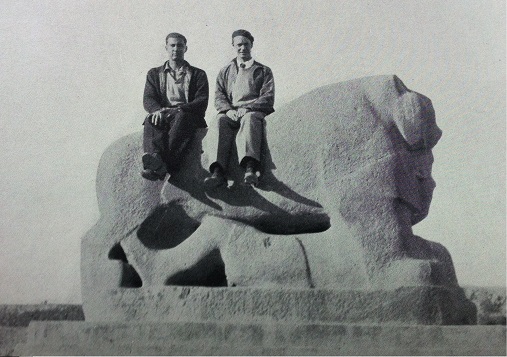
I’d also like to help out with the Global Women Who Ride project by connecting with women riders around the world. I’m really excited to help, and doubly excited to meet, interview and photograph women riders from countries like Morocco, Georgia and Borneo.
RIDING IN COLORADO
As a Colorado native, can you tell us what the riding’s like where you live? I live in Fort Collins, a city of 200,000 people in the northern part of the state where the plains meet the Rocky Mountains. That means I have all sorts of terrain and every kind of road within riding distance from my house!
For dirt riding I can either head up into the mountains to the Forest Roads and single-track, or I can truck the bike out to the Pawnee Grasslands to explore the arroyos and mesas. The road riding here is really beautiful, with many windy canyon roads leading up into the mountains.
Do you have a classic Sunday morning ride? When I need to stretch my bike’s “legs” we head up into the foothills for a lap around Horsetooth Reservoir. First, we ride to the South Dam Road, then up the tight switchbacks to the top of the dam itself. Horsetooth Reservoir is nestled between the rolling foothills of the Front Range and the hogbacks, a formation of rock ridges that thrust upwards like the plates on a stegosaurus’ back. We ride north up and down those plates, around tight corners and along flat stretches, all the while with the reservoir long and blue to the left. After the third dam, the road mellows out and curves gradually back into town. It’s the perfect little loop when you have some pent up energy! [Link to ride]
The Sunday ride is really short, so a longer day’s ride to show people around my area would probably be a loop through Estes Park and Lyons. Both of these places were devastated in the recent floods, but the roads are being rebuilt quickly, so the ride should be good again next summer. To get to Estes, avoid the city roads and instead ride up past Horsetooth Reservoir to Masonville, then head south to connect with the Big Thompson Canyon. The canyon is windy and stunning with amazing rock formations. In the town of Drake opt for the right-hand branch on Road 43–there are fewer cars on it, and the view from the top is a wonderful surprise. Estes Park is a cool town, though very touristy, so after saying hi to the local elk population, ride down Hwy 36 (another picturesque canyon) to Lyons for lunch at the Oskar Blues brewery. Then home again via the flat roads on the plains. [Link to long ride]
What was the last fun ride you went on?
Dirt riding outside of Buena Vista, Colorado, with a bunch of other accomplished trail riders. I tackled my first single track, first sand-bed arroyos, and first steep dirt hills. It was a blast!
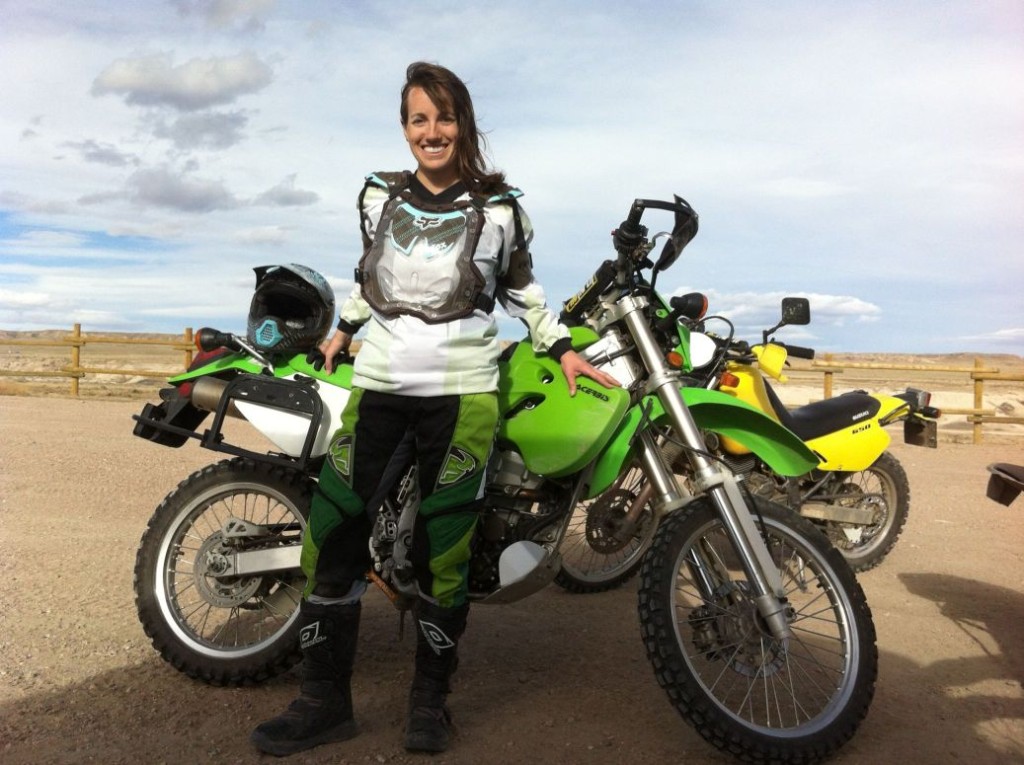
Sarah Schmeer with her Kawasaki KLX
Is it safe to ride at night where you live? Yes, in that people won’t set up road blocks and try to rob and/or kidnap me. No, in that riding is always a little more risky at night with the reduced visibility. Also, we have elk, deer, mountain lions, skunks, raccoons, foxes, etc crossing the roads here at night, and I don’t want to encounter any of them while riding!
Have you had any mentors, male or female, who contributed to your growth as a motorcyclist? My friend Jen is someone I met when I moved back to Colorado. She contacted me online and offered to ride with me, even though I was a newbie in the world of trail riding. She has been a wonderful role model and instructor, and has really helped me overcome my various trail riding fears. And, best of all, she’s a woman and she’s tiny, so I can’t use either of those as excuses anymore! ![]()
Read more about Sarah’s motorcycle trip through Central America here: New Mexico to Old Mexico and Beyond, Through Central America

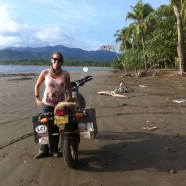





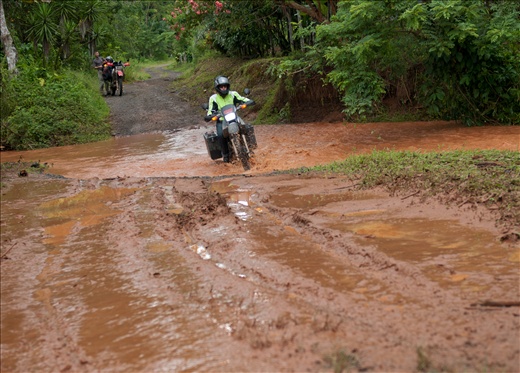
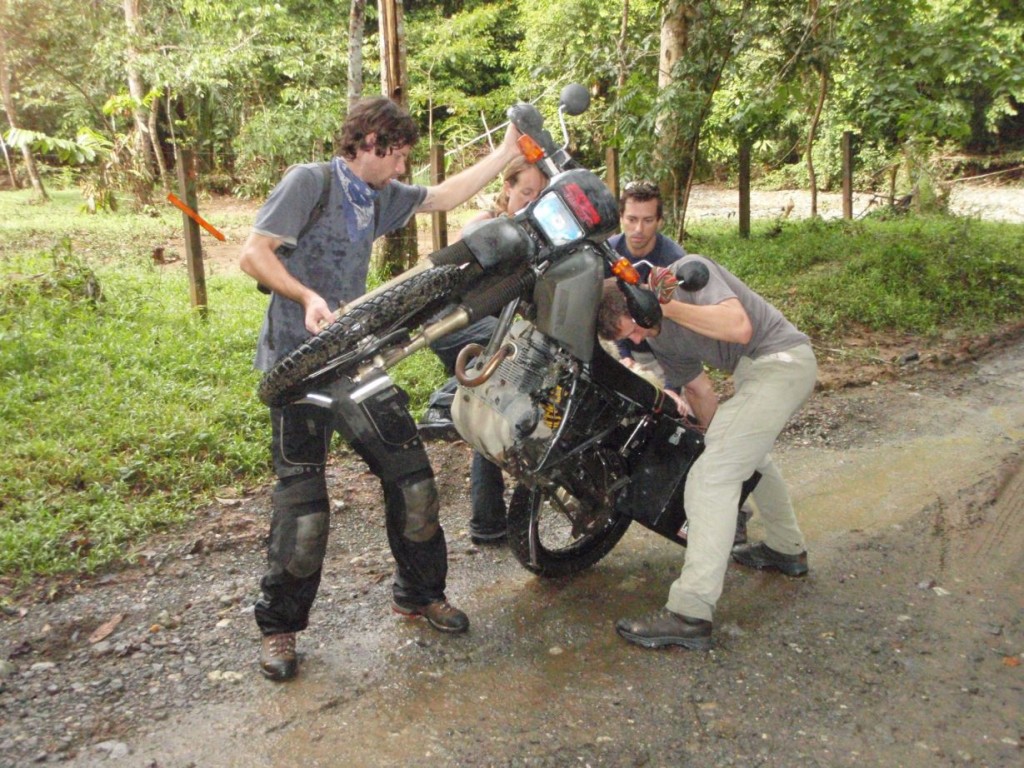
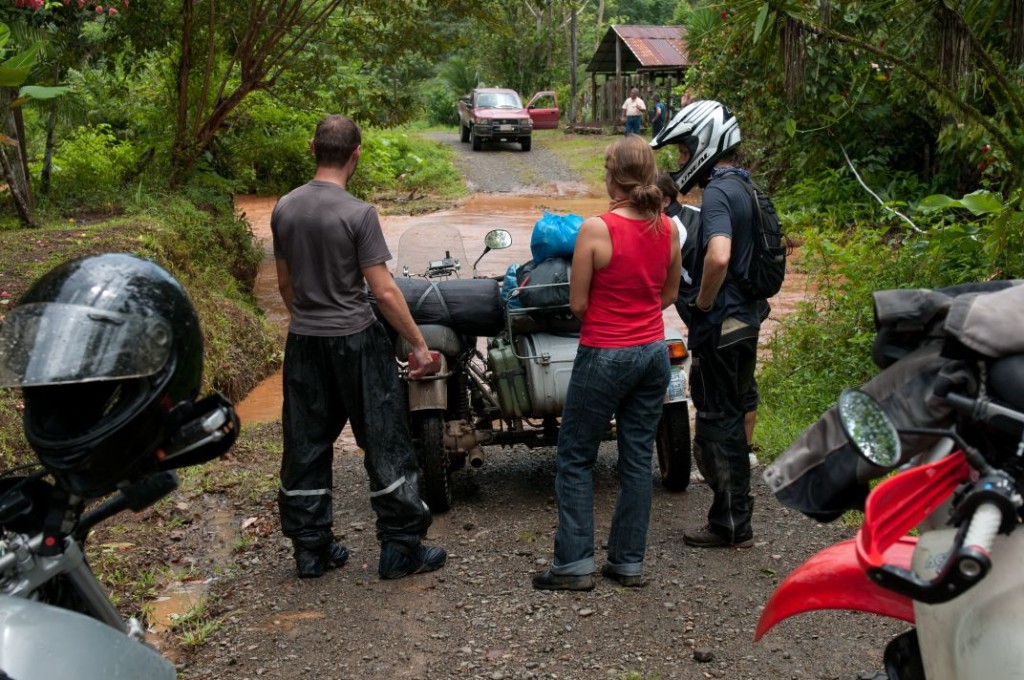
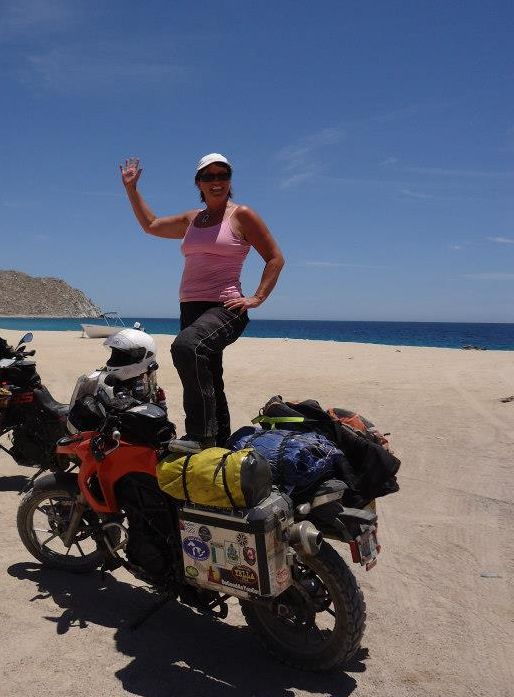
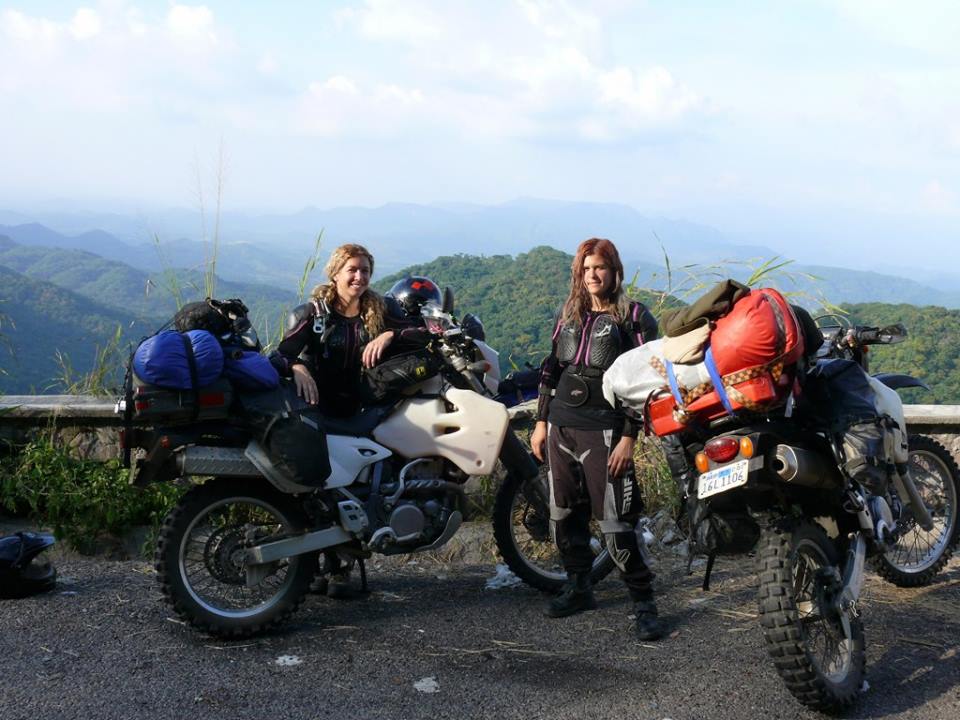
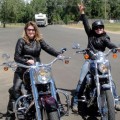
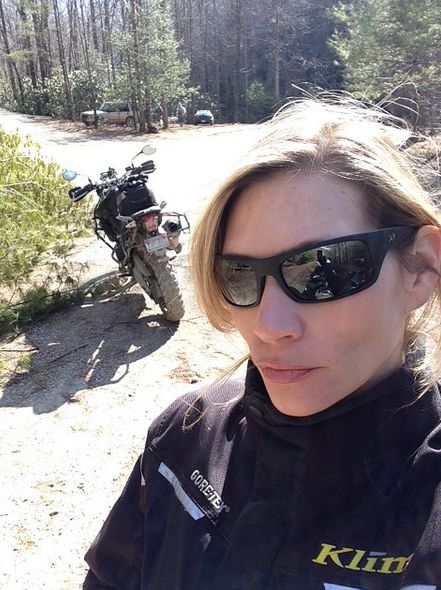
No words… She is a real hero! I am totally fascinating by her stories, especially the story about the kick starter and oil changes in the jungle :-D Wish her a great trip around the world!
Impressive! Learn how to ride and just leave for a trip accross central America, that’s something! Good luck in your new travel project, looks great! Ah, and I loved the “and it doesn’t have to be pink, really” I think the same lol
I, too, am a fan of Halliburton and wish you the best of luck and joy in the travels! Your plans sound wonderful.
Well done — I am also a fan of Richard Halliburton. He is an inspiration.
Great luck on your journey